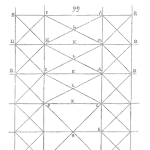
While I was at the gym last week, I was listening to the Brendan Burchard podcast and he was talking about building confidence. He mentioned that you cannot build confidence with external rewards like trophies, awards, promotions, etc. and that you need to build confidence from the inside. The statement that hit me the hardest was that the way to build confidence is by progression through struggle. [Read more…]












 Ask a question or send along a comment.
Please login to view and use the contact form.
Ask a question or send along a comment.
Please login to view and use the contact form.